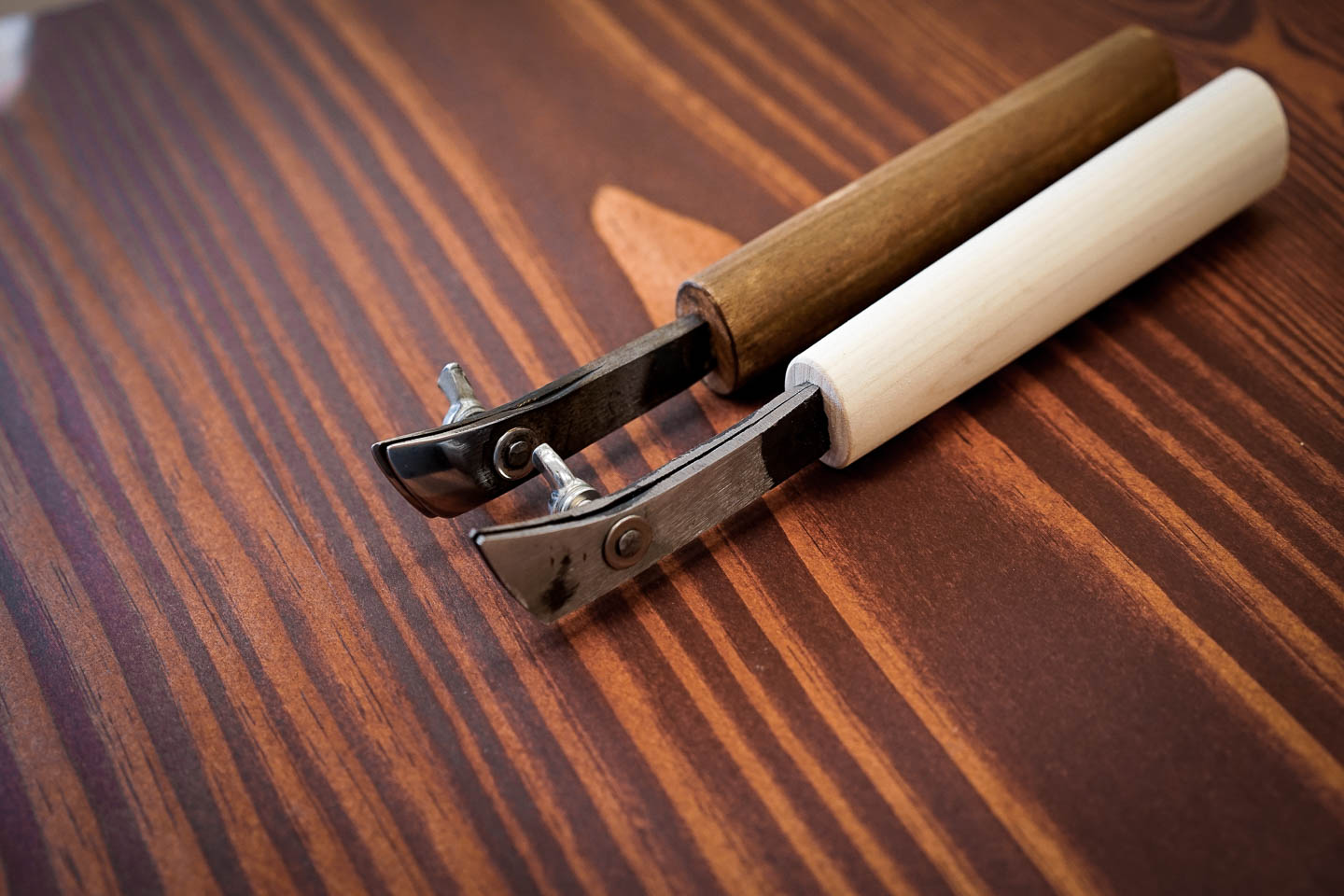Japanese Edge Creaser
The small addition of decorative creasing on leather products can make a tremendous difference in the overall appearance and general perceived quality of an item. Decorative creasing can be found along most edges and card slots. Although a seemingly simple addition, much skill is required to execute a nice crease following the contours of an edge. A poorly executed crease can subtract exponentially from the aesthetics of an item when compared to no creasing at all. Creasing is especially hard on small radius corners as well as concave curves.
My preferred tool for this task is a Japanese creasing iron or “Nen” (ネン). This tool utilizes heat (from an Alcohol lamp) and pressure to leave an impression on the leather. When new, the business end of the creasing iron is symmetrical and is in a raw state from the blacksmith. There are multiple reasons for this, but the the three most important factors are hand dominance, application, and aesthetics,
Edge creasing irons work by using one blade as a guide to ride along the edge of the leather to be creased while the other makes a linear indentation on the surface of the leather. For this reason, the longer guide blade riding on the outside of the material must correspond to the hand that is using the tool. This height differential is accomplished by grinding down the blade opposite to your dominant side.
Application dictates how much the height differential should be between guide blade and creasing blade. For thinner material, the height difference must not be too great, as a longer guide blade will restrict how much downward pressure the creasing blade can exert. This is very important, as a crease is formed with equal parts pressure and heat. Often multiple creasing tools are required depending on one’s range of items. Thicker material requires a greater height differential. If the guide is too short, it will dig into the edge causing an unsightly divot that will make a nice smooth edge impossible to achieve.
In addition to material thickness, application also dictates the profile of the creasing iron blades. For long straight creasing, a blunt tip sloped slightly upwards with a shallow belly is all that is required. For creasing tighter corners and curves, a finer tip and more belly is necessary as you must cant the tool forwards, minimizing the contact patch as you follow the curve, in order to leave a clean impression. It may take several attempts to settle upon a final profile.
Finally, once one establishes the correct height and profile through grinding, crease aesthetics come into play. Creases can range from very fine to broad depending on the personal taste of the craftsmen. These creases can also have more rounded or more squared off troughs. As the blades are left fairly thick by the blacksmith, the creasing blade must be beveled with a file, grinder, sandpaper, diamondstone, etc. The degree and height of the bevel will dictate the width of the crease. The degree to which the edge is rounded or left square will dictate the bottom shape of the crease trough.
In addition to the above modifications, any surface that touches leather should be sanded perfectly smooth and mirror polished. This minimizes friction and allows the tool to glide freely along the material.


